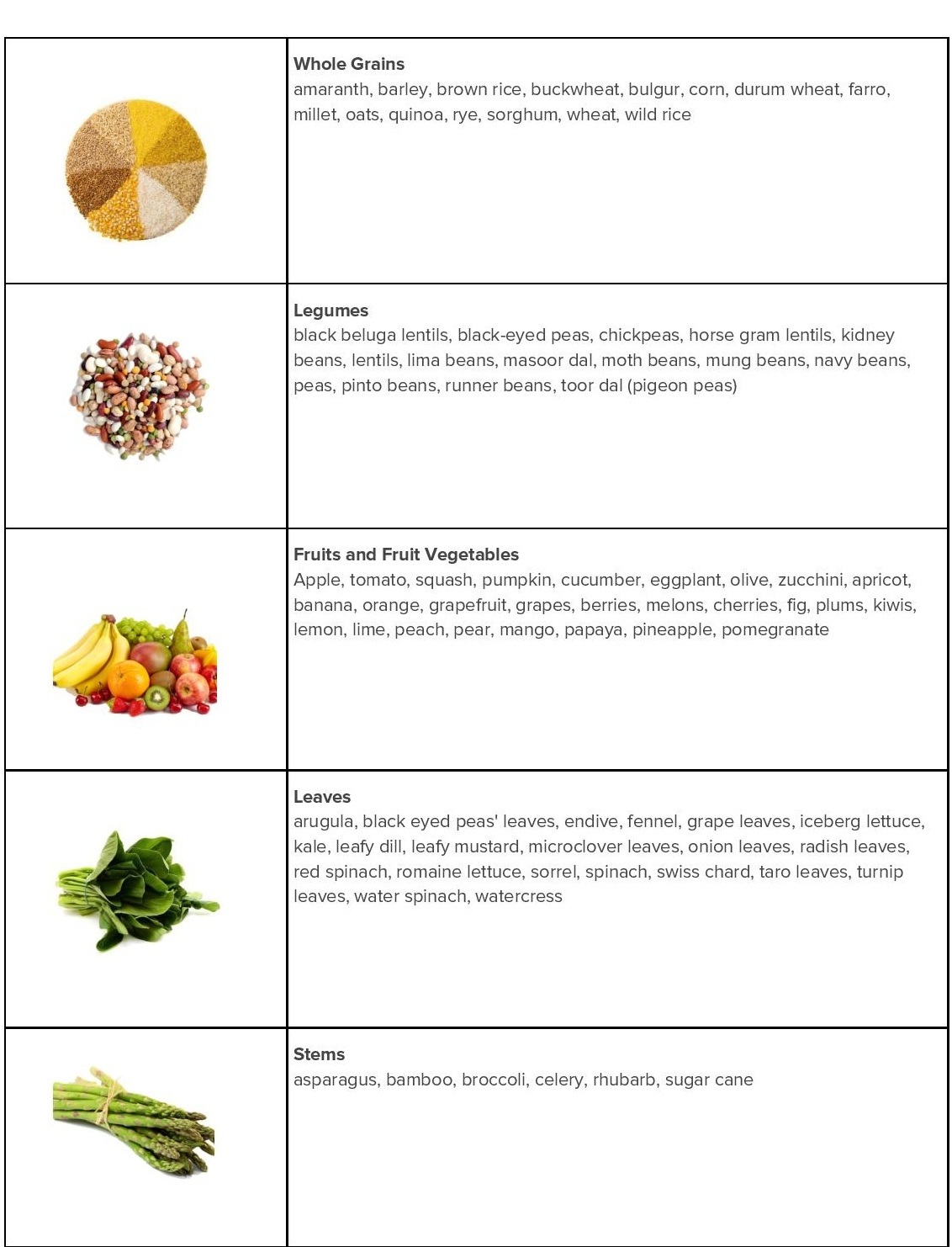10 Food Groups We Love!
/You may have heard the term whole food plant-based being used by many doctors and nutritionists as well as on this website. Well, so the big question is what does this mean?
According to the world famous Professor Emeritus of Nutritional Biochemistry at Cornell University, Dr. T. Colin Campbell, “Plant-based, whole foods come from plants including vegetables, fruit, grains, legumes, mushrooms, nuts, seeds, tubers, etc.” [1] A whole food plant-based (WFPB) diet is special because it is defined by what it emphasizes: a large variety of whole foods from plants.
As Dr. Campbell’s Center for Nutrition Studies states, “The term ‘whole’ in WFPB describes foods that are minimally processed. Heavily processed foods, on the other hand, are not included in a WFPB diet. This means avoiding highly refined grain products (e.g., white rice, white flour), foods containing added sugars or artificial sweeteners (e.g., confectioners sugar, high fructose corn syrup), and foods containing added fat. Yes, even olive oil.” [2]
As mentioned in 4 Smart Strategies to go Whole Food Plant-Based (WFPB), “Junk food is defined to be highly processed and refined. Highly processed foods will usually have artificial or concentrated chemicals to increase the shelf life of the food while destroying health. Refined foods are obtained by concentrating naturally occurring substances. As an example, the sugar derived from beets is junk food, but beets are not, because whole beets are complete foods made by nature. In a similar way, olives are examples of whole foods, but olive oil is not.” In this manner, a WFPB diet is a vegan diet, but a vegan diet is not necessarily a WFPB diet. I try to mostly follow a WFPB diet, but sometimes I do enjoy other vegan treats.
A WFPB diet is possibly the richest diet in terms of vitamins, minerals, and dietary fiber per calorie consumed. [3] When people first transition to a WFPB diet, they are pleased to discover the variety of plant foods available to them. Each of the categories I have listed below, whole grains, legumes, fruits and fruit vegetables, leaves, stems, flowers, bulbs, roots, and tubers, nuts and seeds, mushrooms, has its own tastes, textures, smells, and colors. When foods from these categories are combined together, they create a flavorful, mouth-watering meal. Additionally, when condiments and spices are added to the mix, it takes the eating experience to a whole new level!
Check out the table below. I’ve tried to include many of the foods in each group. If you have any other favorites send them to me. Now, the next time you visit the grocery store you will know what foods to buy more of. Then you can try out some of these foods to make some of our Recipes. Enjoy!
Table of WFPB Food Groups
I have listed supplementation because scientists are currently debating whether or not it is needed.
Sources:
[1] https://nutritionstudies.org/defining-food-groups-plant-based-nutrition/
[2] https://nutritionstudies.org/what-is-a-whole-food-plant-based-diet/
[3] https://nutritionfacts.org/video/what-are-the-healthiest-foods/


